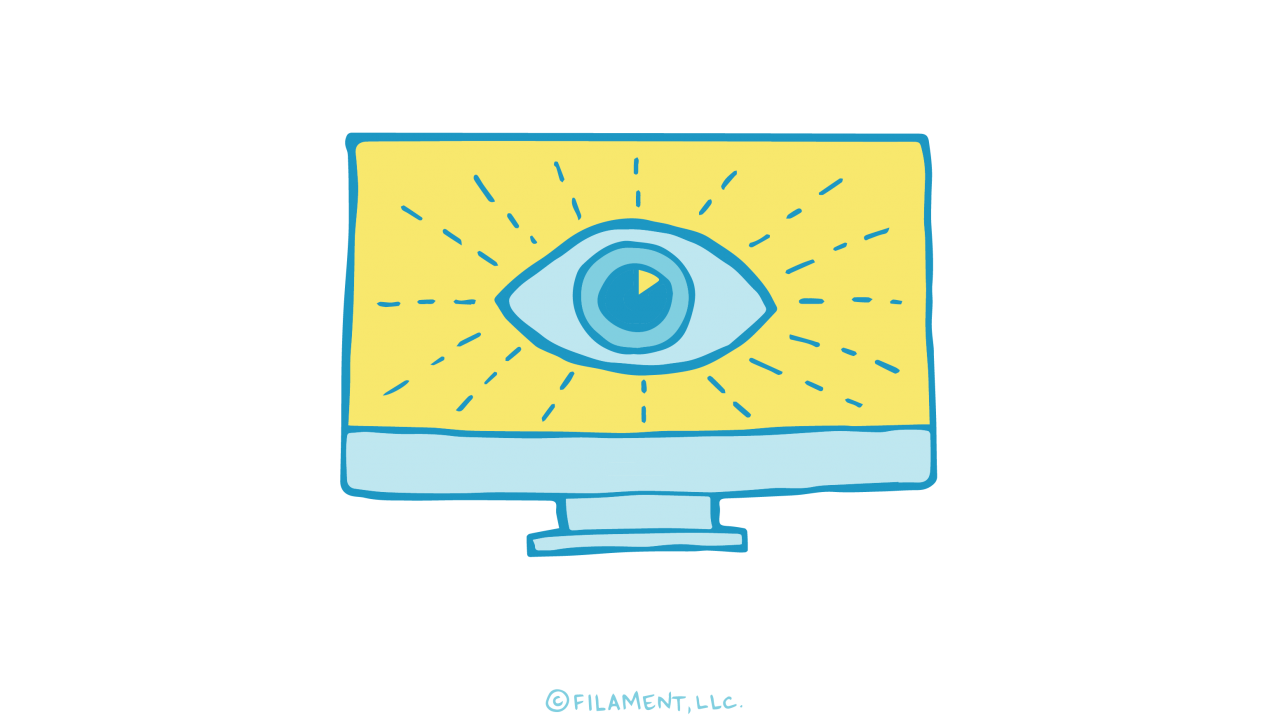Seeing as visual content is one of the biggest trends in content marketing right now – and one that we expect to continue to grow in 2016 – we’ve decided to take some time to talk about the importance of developing a documented visual content marketing strategy and one way to create your own.
What Is Visual Content?
First of all, what do we mean when we talk about visual content? We’re not only talking about videos and infographics. We’re also talking about incorporating text and graphics in social media posts and emails to tell a story about your services, your products and your brand. It makes sense that to tell a visual story, you’d want to have a strategy that outlines how you will develop, plan, create and deliver that content.
Do We Really Need a Visual Content Marketing Strategy?
What other reasons beyond common sense are there for creating a visual content strategy? For one, it allows you to lay out your goals and objectives that will guide you toward the metrics you’ll be tracking in order to evaluate your visual storytelling efforts. Second, it will help you feel more effective at visual content marketing. And, last but not least, it will help you justify spending a higher percentage of your marketing budget on visual content.
What’s a Visual Content Marketing Strategy?
Now that we’ve got that settled, what is visual content marketing strategy? In short, it’s an outline of your business and customer needs and a detailed plan for how you’ll use visual content to address those needs. It focuses on the ways we’ll use visual content to engage our audience and drive profitable behaviors.
We’ve developed our method for creating a visual content marketing strategy from the Content Marketing Institute’s version, but there are many ways to create an effective strategy. What works for you will depend largely on your business goals and needs of your customers. The only thing that’s true across the board is that your strategy needs to be documented. Yes, you’ve got to write it down, folks.
Step 1: Business Case
Document your business case for innovating with visual content. What are your reasons for creating visual content? What is visual content going to add to your business or organization? Create a visual content mission statement.
What are the risks involved? What will success look like? Be as specific as possible. Include research that shows trends in marketing and case studies and/or examples to help make your case.
Step 2: Business Objectives
List the objectives you have for your visual content program. Are you trying to create awareness? Generate leads? Be clear and specific. Then, think about the unique value you’ll provide with your visual content. This is what Jay Baer calls “Your One Thing.” What will you create with your visual content that will set you apart from your competitors?
Step 3: Audience Personas & Visual Content Maps
Define your audience by creating audience personas that describe the specific audiences you’ll be creating visual content for. Those specific audiences are dictated by your objectives. As part of your personas, research what their needs are. Look at search and social media, have conversations with personnel who deal most with your customers, and have conversations with your customers themselves. Lastly, detail what your audience’s visual content engagement behavior looks like, and define their customer journey. Then, map out visual content you can create and deliver throughout their journey to move them down the funnel.
Step 4: Measurement Plan
Using your business objectives, create a measurement framework that includes the metrics you’ll use to measure whether or not your visual content is meeting those objectives. As Baer writes, “[I]f you want to track behavior, you must do something trackable.”
Step 5: Visual Content Creation Plan
We suggest a 2-pronged content creation plan. Part 1 involves documenting your brand story. What ideas and messages do you want to communicate? How are those messages different from the ones your competitors are telling? Part 2 describes how you are going to tell that story with the information you collected while creating your audience personas and content maps. Since you know when, where and how your customers consume visual content and what kind of visual content they engage with most, you can build a plan that outlines what content you’ll create daily, weekly, monthly, quarterly and yearly. Remember to include an editorial calendar as part of your content creation plan. Lastly, detail any obstacles and opportunities you might expect to encounter as you carry out your plan.
Step 6: Distribution Plan
Make a list of the platforms you’ll use to tell your story. List your processes and objectives for each platform. Decide in advance how you’ll connect them so they’ll create a cohesive brand conversation. Include the different people, such as customers, employees, and influencers, who can help in sharing your story.
Conclusion
Follow these 6 steps and you’ll have a documented visual content marketing strategy that you can share with others in your company. After that, be sure to review and update your strategy from time to time to be sure that it aligns with your visual content’s objectives and your customers’ needs and behaviors.
Get in touch with Filament to find out how we can help you develop a visual content marketing strategy for your business.



Comments (1)